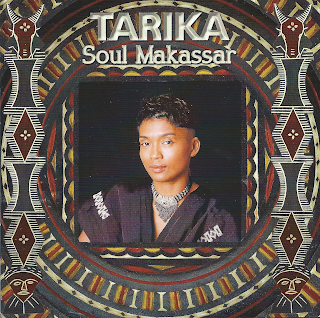 |
| Cover of Tarika Soul Makassar CD |
It is called Ant Show in part because it is in Antananarivo. But it is also Ant Show because the founder's name sounds a lot like Ant when it is spoke. Her name is Hanitra Rasoanaivo. (All family names in Madagascar begin with either "A" or "R" and are many syllables long.) The "H" that begins her name is silent and the "r" that follows the "t" changes the consonant sound into the "ch" sound of English. And the "a" at the end is nearly silent. That results in "Anch" with just a bit of air following the "ch" sound.
Hanitra and her sister Noro are the front members of the musical group Tarika, which was named by TIME magazine in 2001 on a list of the 10 best bands on planet Earth, although you probably haven't heard of them. Here's an opportunity to listen to a track from their album Soul Makassar, released in 2001. The album was a special project for Hanitra as she travelled to Sulawesi in Indonesia looking for ancestral origins. The video linked above also includes many of the traditional instruments that Hanitra hopes to preserve. The deforestation of the island threatens the materials to make the traditional instruments as well as the wildlife.
 |
| Madagascar valiha |
Two percussion instruments also made from cylinders of bamboo are rain sticks and kaimba. The interior of the cylinder of a rain stick has "stairs" that catch the dried seeds that flow down through the obstacles of the stairs when the stick is upended, making a sound very much like rain. The other percussion cylinder, a kaimba, is usually smaller and has nothing inside to impede the movement of the dried seeds inside as the musicians shake the stick. One of the performers the evening we were at Ant Show included this percussion instrument with his music, but he didn't have a wooden instrument. His was a modified Bayer aerosol insecticide can that did the trick, although I missed seeing the delicate carvings around the cylinder. Mine have lemurs, of course.
 |
| A rain stick (the larger of the two) and a kaiamba |
The group started out as Tarika Sammy in the 1980s but by 1993 when the members had relocated to London, Sammy split from the rest of the group and the reformed group debuted as simply Tarika, the Malagasy word for group. Tarika has since returned to Madagascar. Tarika Sammy has regrouped - or at least Sammy Andriamalalaharijaona is back in the music business - and has been contributing to the education of the children at Avany Avoko having most recently added instruction in traditional musical instruments, including the valiha and a small traditional guitar, the kabosy.
The highlight of my birthday was when Hanitra learned it was my birthday that evening and sang a song a cappella just for me. I have no idea what the song meant, but it was thrilling to listen to.
Ant Show also offered classes in traditional Malagasy music and dance, in yoga and meditation, and had rooms for rent. I am not certain if Ant Show survived, however, as I cannot find any information about it online.
Since Paul was the assistant public affairs officer at the embassy and had responsibility for cultural programs, including educational and cultural exchanges between the U.S. and Madagascar, it was easy to understand that Paul's calling in Madagascar was Ant Show.
No comments:
Post a Comment